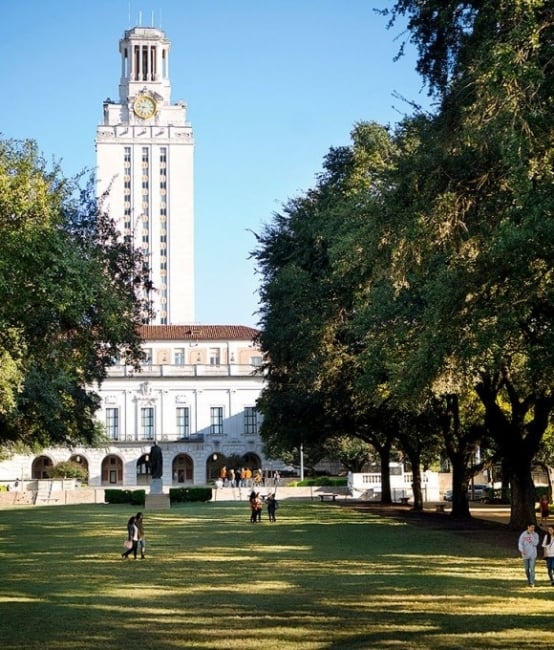You have /5 articles left.
Sign up for a free account or log in.

University of Texas at Austin
The Texas "top 10 percent" admissions plan has now been in place for more than two decades. The idea behind it was simple: let students who are in the top 10 percent of their high school classes go to any public university in the state. No testing required.
The impetus for the percent plan was that a federal appeals court had barred Texas public universities from considering race in admissions. Lawmakers in Texas wanted a way to assure some diversity in the state's top universities. And they got it. As numerous previous studies have shown, the percent plan assured every Texas university (but especially the University of Texas at Austin and Texas A&M University) would enroll minority students. (That's because Texas has many high schools that are segregated by race and ethnicity.)
A new study says the program, "Uniform Admissions, Unequal Access," has in fact attracted more graduates of high schools -- including more Latinx and Black high schools -- to apply to the state's top universities.
But the working paper from the National Bureau of Economic Research concludes that "the representation of traditional, always-sending, feeder high schools on the flagship campuses continued to dwarf the population of students from other high schools. Thus, the purported high school representation benefits of the policy appear to be overstated and may not go as far as advocates might have hoped in terms of generating equity of access to the flagship campuses in the state."
The paper is by Kalena Cortes of Texas A&M University and Daniel Klasik of the University of North Carolina at Chapel Hill.
The findings are based on examining where students who enrolled at UT Austin and Texas A&M went to high school.
"We find that the Top 10 Percent Plan appeared to increase the likelihood that high schools from non-suburban areas of Texas sent students to the flagship campuses that had not previously done so. This result suggests an increase in geographic diversity; however, these changes did not amount to regular sending patterns and the population of students from these high schools was dwarfed in enrollment by the population of students from high schools with patterns of sending students to the flagship campuses that were well-established before the Top 10 Percent Policy began," their paper says.
"In general, the high school sending patterns to either flagship campus, always-sending schools have the fewest free lunch eligible students (26 percent), the largest grade-12 enrollment (mean 230 students), the highest average SAT scores (26 percent in 1st quartile), and are also the closest to both UT and TAMU campuses (152 miles to the nearest flagship campus, on average)," they write. "Always-sending schools send over 2 percent of their seniors to UT and over 3 percent to TAMU. In stark contrast, never-sending schools have the highest percentage of free lunch eligible students (34 percent), the smallest grade-12 enrollment (average 26 students), the lowest SAT scores (7 percent in 1st quartile), and are the farthest from each of the flagship campuses (209 miles from the nearest flagship campus, on average)."
But Michael A. Olivas, William B. Bates Distinguished Chair in Law Emeritus at the University of Houston Law Center, has a different perspective.
He said that the study is flawed because it looks only at two institutions. The University of Houston and the University of Texas at Dallas both get top 10 percent students, he said. Leaving them out skews the totals. And in South Texas, there are Latinx students who attend community college and then go to the two flagships.
Olivas, who advised the legislators who designed the 10 percent plan, said, "I'd like to declare victory and go home."




